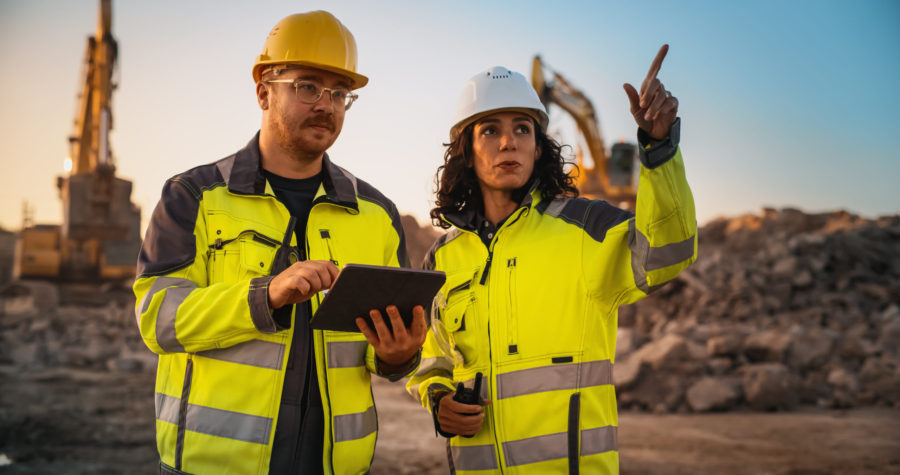Argentina to support local uranium production — report

TORONTO , July 7, 2016 /CNW/ – U3O8 Corp. (TSX: UWE; OTCQX: UWEFF; SSE: UWECL), a Canadian-based company focused on the development of deposits of uranium and associated commodities, many of which are used in the clean energy industry, reports on significant developments in nuclear energy in Argentina, South America’s largest generator of electricity from nuclear:
- Argentina’s Minister of Energy and Mines emphasized the Federal Government’s support for uranium production from Argentina to fuel its growing fleet of nuclear power plants;
- Argentina has signed an agreement whereby it will import enriched uranium to fuel its small modular reactor (“SMR”), on which construction is nearing completion. The Argentine-designed CAREM-25 model is one of the first modern SMRs to be built in the world. Numerous other SMR designs, for example those in Canada , USA , UK, China and Japan , are advancing through the design and permitting stage. SMRs are projected to be a high-growth area in the nuclear and clean energy industry;
- A memorandum of understanding has been signed regarding the financing and construction of Argentina’s 4th and 5th nuclear power plants; and
- The Minister of Energy and Mines has committed to fund upgrades to eleven nuclear medicine facilities in Argentina .
To the Company’s knowledge, there are only three uranium deposits on which economic studies have been concluded in Argentina : one has been mined out and the other two include the State’s Cerro Solo and U3O8 Corp.’s Laguna Salada deposits. Production from these deposits could provide the uranium required by Argentina’s nuclear reactors and alleviate Argentina’s total reliance on imported nuclear fuel.
Argentine Federal Government support for local uranium production
At a recent meeting with Senator Luenzo from Chubut Province, Energy and Mines Minister, Mr. Jose Aranguren , emphasized the new Federal Government’s support for the development of the uranium mining industry in Argentina 1.
Argentina is South America’s largest generator of electricity from nuclear.
To the Company’s knowledge, there are three uranium deposits on which economic studies have been undertaken in Argentina. The first, the Sierra Pintada Deposit, has been mined out. The other two deposits are located in Chubut Province:
- U3O8 Corp.’s Laguna Salada Deposit on which a resource estimate2 and subsequent preliminary economic assessment (“PEA”)3 has been completed in accordance with National Instrument 43-101 (“NI-43-101”). The cash cost of production at Laguna Salada was estimated at US$22 per pound of uranium net of by-product vanadium. If actual costs are in line with this estimate, Laguna Salada would be within the lower 25% of the uranium industry in terms of production cost. The Company believes that these estimates contained in the PEA, and the assumptions upon which they are based, remain current. (The PEA is preliminary in nature, and includes inferred mineral resources that are considered too speculative geologically to have the economic considerations applied to them that would enable them to be categorized as mineral reserves. There is no certainty that the results of the PEA will be realized); and
- The Cerro Solo Deposit, which belongs to Argentina’s National Atomic Energy Commission (“CNEA”), is located approximately 150km from U3O8 Corp.’s Laguna Salada Deposit. CNEA has undertaken a resource estimate and economic assessment of Cerro Solo , but has not released its economic study, and hence production cost estimates are not available in the public domain. Cerro Solo is a sandstone-hosted deposit that would most likely be mined by underground methods.
Argentina purchases enriched uranium to fuel one of the world’s first Small Modular Reactors
Brazil recently announced that it has entered into an agreement to sell four tonnes of enriched uranium to Argentina to fuel its prototype CAREM-25 small modular reactor4. The CAREM-25 reactor is one of two SMRs with generation capacity of less than 50 Megawatts under construction worldwide5. The CAREM-25 reactor is scheduled to start generating electricity in late 2017 while the other SMR of similar size is under construction in Russia. The CAREM-25 is a pressurized water reactor with integral steam generators and the entire, passive coolant system is contained within the 3.5 metre diameter, 11 metre high pressure vessel; the reactor vessel would be similar in size to a 40 foot shipping container. The reactor would be refuelled annually with standard enriched reactor fuel6.
At 25 Megawatts, the CAREM-25 model would have an output of only 1.5%-2.5% of a typical Generation III nuclear reactor. Some of the SMRs, of which there are many designs progressing through the permitting process in various countries, are generally based on technology similar to that which has been used in nuclear-powered submarines and ships for almost 60 years. SMRs are projected to have a relatively low capital cost, and are designed to have low operating costs to provide an affordable, low-carbon source of energy. The CAREM-25 prototype is being built to unequivocally demonstrate the cost of construction as well as to define the actual cost of clean energy production.
SMR’s are expected to be a high-growth area for the nuclear and clean energy industry because the plants can be located close to where the electricity is needed without the environmental footprint, cost and energy loss associated with regional high-tension power lines connecting the end user with the regional electricity grid. Apart from providing power for communities and industries in remote locations, the CAREM-25 reactor is being marketed as a clean power source for the production of fresh water by the desalination of seawater. To that end, a joint venture has been established between the Argentine company INVAP and the Saudi Arabian nuclear power authority to determine the suitability of the CAREM-25 reactor for desalination plants in Saudi Arabia 7.
Agreement signed regarding the construction of Argentina’s 4th and 5th nuclear power plants
Minister Aranguren has announced the signing of a memorandum of understanding reaffirming plans for the financing and construction of two nuclear power plants, Argentina’s 4th and 5th. Chinese banks will contribute 85% of the total estimated cost of US$15 billion 8. To put the cost of the reactors in context, Argentina is currently spending US$7 billion per year on energy imports.
Argentina’s 4th reactor will be a Canadian-designed, 800 Megawatt CANDU model that uses natural (un-enriched) uranium fuel. Construction is planned to commence in the first quarter of 2017 at the site where the Atucha I and II reactors are located.
The 5th nuclear power plant will be a 1,150 Megawatt Hualong 1 reactor, a design by China General Nuclear and China National Nuclear Corp., that uses enriched fuel. Construction on the 5th plant is planned to start in the latter half of 2019.
Federal funding for nuclear medicine facility in Chubut Province
Minister Aranguren also confirmed that the Federal Government is committed to Argentina’s National Nuclear Medicine Plan through which eleven nuclear medicine centres throughout the country will be upgraded. One of the centres for which funding has been guaranteed is the CABIN (Centro de Aplicaciones Bionucleares) facility in the city of Comodoro Rivadavia in Chubut Province.9
Planning for the Laguna Salada Deposit
The next steps planned for the Laguna Salada Deposit are trial mining and pilot plant processing of bulk samples at one of Argentina’s processing facilities. The aim of this work is to refine mining and processing costs to feasibility study standards as well as to provide proof of concept for uranium production from mineralized gravels at Laguna Salada.
Laguna Salada lies in the “Roaring Forties”: latitudes renowned for high winds. To that end, the Company is involved with a high-level study to investigate the viability of incorporating wind-generated power into the Project as a means of further improving the Project’s economics. In addition, although nuclear reactors do not generate greenhouse gases, nuclear energy is not classified as “carbon-free” because of the use of fossil fuels in the mining and transport of uranium. Incorporation of renewable energy into uranium production from Laguna Salada provides an opportunity to produce a low-carbon uranium product that would allow our future customers to move closer to “carbon-free” nuclear energy.
U3O8 Corp. is committed to providing uranium required to fuel the nuclear component of the Argentine government’s clean energy initiative. That initiative includes increasing Argentina’s nuclear energy capacity as well as increasing renewable energy production: the recently announced target is to have 8% of the country’s electricity generated by renewable sources by the end of 2017 and 20% by 2020.10
Technical Information
Dr. Richard Spencer , P.Geo., President and CEO of U3O8 Corp. and a Qualified Person as defined by NI 43-101, has reviewed the technical information in this news release relating to the Laguna Salada Deposit and the associated PEA.
About U3O8 Corp.
U3O8 Corp. is focused on exploration and development of deposits of uranium and associated commodities in South America. Potential by-products from uranium production include commodities used in the energy storage industry – in the manufacture of batteries – such as nickel, vanadium and phosphate. The Company’s mineral resources estimates were made in accordance with National Instrument 43-101, and are contained in three deposits:
- Laguna Salada Deposit, Argentina – a PEA shows this near surface, free-digging uranium – vanadium deposit has low production-cost potential;
- Berlin Deposit, Colombia – a PEA shows that Berlin also has low-cost uranium production potential due to revenue that would be generated from by-products of phosphate, vanadium, nickel, rare earths (yttrium and neodymium) and other metals that occur within the deposit; and
- Kurupung Deposit, Guyana – a uranium resource has been estimated in four veins within a uranium-zirconium vein system. Resources have been estimated on four veins, while consistent mineralization of the same type has been intersected in scout drilling of an additional six veins, while yet other veins require first-time exploration drilling.
Information on U3O8 Corp., its resources and technical reports are available atwww.u3o8corp.com and on SEDAR at www.sedar.com. Follow U3O8 Corp. on Facebook: www.facebook.com/u3o8corp, Twitter: www.twitter.com/u3o8corp and Youtube: www.youtube.com/u3o8corp.
More News
Rio Tinto, Founders Factory’s Mining Tech Accelerator invests in startups from US and OZ
April 23, 2025 | 04:02 pm
{{ commodity.name }}
{{ post.title }}
{{ post.date }}



Comments